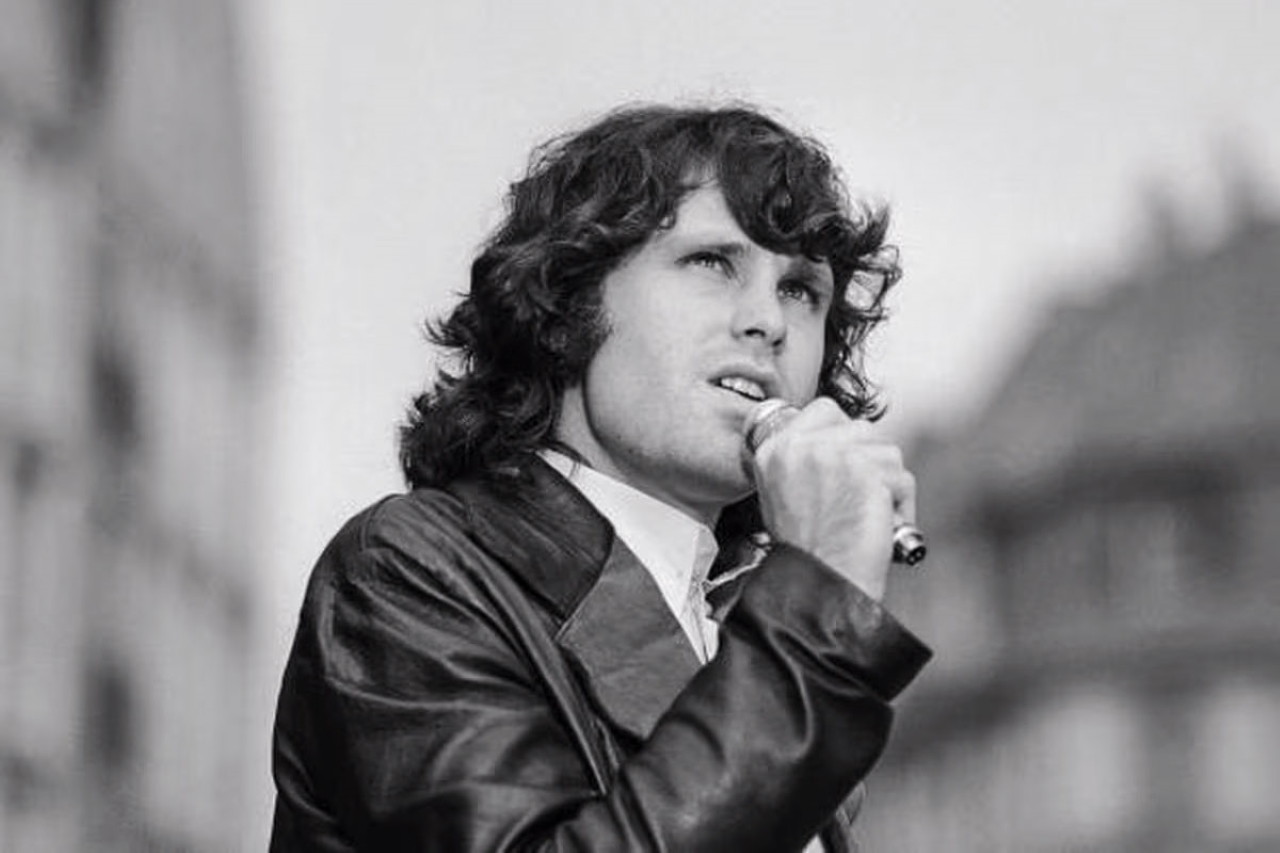⚡ The Storm Before Silence
In the summer of 1971, Los Angeles was restless. The Doors had just finished recording L.A. Woman, their sixth studio album, inside a makeshift rehearsal space on Santa Monica Boulevard. Unlike their earlier work, this record wasn’t polished in a shiny studio; it was raw, urgent, and drenched in blues.
And then came “Riders on the Storm” — the last track, the last recording Jim Morrison ever made with the band. It was more than a song. It was a storm cloud, slow-moving, electric, and heavy with the sense that something was ending.
The thunder and rainfall layered over Ray Manzarek’s electric piano weren’t just studio effects — they were an atmosphere, a foreshadowing. Listening to it felt like standing on a lonely highway, headlights cutting through the rain, waiting for fate to arrive.

🌙 A Whisper in the Darkness
Morrison’s voice on this track is unlike any he’d recorded before. There are two Morrisons: one singing the melody with his deep, resonant baritone, and another — ghostly, whispered — layered beneath, like an echo from another dimension.
The whispered track was Morrison’s idea. He wanted it to feel like a haunting, like a rider whose presence you can sense but never fully see. It worked. That whisper creeps into the subconscious, the way thunder creeps across a sleeping city.
The lyrics themselves were deceptively simple:
“Riders on the storm
Into this house we’re born
Into this world we’re thrown…”
But behind them was Morrison’s existential philosophy — life as a storm, people as riders, thrown into chaos without choice, destined to navigate the rain until their journey ends.
🚘 The Phantom Hitchhiker
The song also carried a chilling story. Morrison had been obsessed with a macabre tale about a hitchhiker who kills the driver who picks him up. That imagery slithered into the lyrics:
“There’s a killer on the road,
His brain is squirming like a toad…”
It was part metaphor, part ghost story. To Morrison, the killer wasn’t just a stranger on the highway. He was the darkness within — the chaos, the violence, the danger we all carry with us.
💔 A Band in Transition
By the time they recorded “Riders on the Storm”, The Doors were falling apart. Morrison was drinking heavily, facing legal troubles after the infamous Miami concert, and feeling increasingly suffocated by fame. The other members — Manzarek, Krieger, and Densmore — knew this might be their last project with him.
That’s why the song feels like a farewell. The piano ripples like rainwater, Krieger’s guitar drifts like headlights in fog, Densmore’s jazz-inspired drumming rolls like thunder in the distance. And Morrison? He sounded already half gone, delivering his last sermon before walking into the storm.
✈️ Paris and the Final Rain
Shortly after L.A. Woman was finished, Morrison left for Paris with his girlfriend Pamela Courson. He told his bandmates he needed to escape the chaos of Los Angeles, to find peace, maybe to write poetry.
But Paris wasn’t redemption. Morrison spent his days wandering the streets, writing, drinking, trying to outrun the storm he carried inside. On July 3, 1971, just months after recording “Riders on the Storm”, Jim Morrison was found dead in a bathtub. He was 27.
The song became his epitaph. Fans began to hear it differently — the whispered voice like a ghost, the storm like death itself, and Morrison’s baritone like a farewell letter.
🎶 Legacy of the Storm
When The Doors released “Riders on the Storm” as a single, it climbed into the Billboard Top 20. But its impact went far beyond charts. It became the soundtrack to rain-soaked nights, road trips down endless highways, and moments of quiet reflection.
It was the last thing Morrison left behind, the final drop of rain before silence.
Today, more than 50 years later, the song still carries that chill. Play it in the dark, and you can still hear Morrison whispering from the shadows, as if reminding us: we’re all just riders, holding on, making our way through the storm.